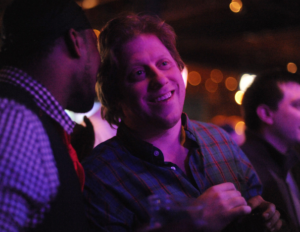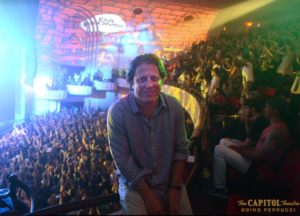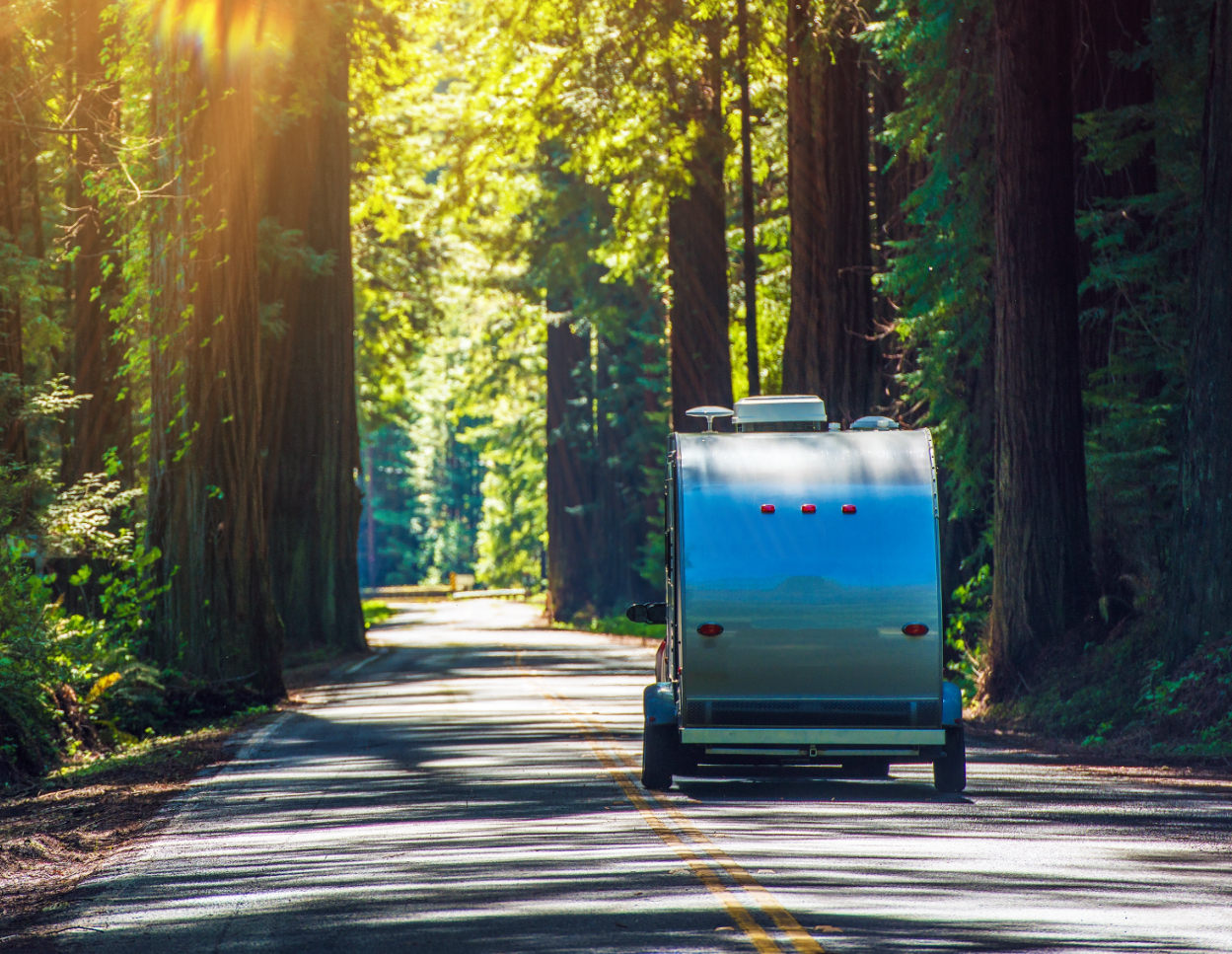 Even before Lockn’ music festival dropped its lineup last week, promoter Peter Shapiro had promised he’d be building upon some sick collaborations of year’s past – like Mad Dogs & Englishmen or last year’s Lettuce / Dead & Company / Eric Krasno late-night frenzy.Trust him when he says this. Shapiro isn’t just a smart festival producer who knows what fans want to see. He knows what he wants to see. Because he’s one of us.
Even before Lockn’ music festival dropped its lineup last week, promoter Peter Shapiro had promised he’d be building upon some sick collaborations of year’s past – like Mad Dogs & Englishmen or last year’s Lettuce / Dead & Company / Eric Krasno late-night frenzy.Trust him when he says this. Shapiro isn’t just a smart festival producer who knows what fans want to see. He knows what he wants to see. Because he’s one of us.
Don’t believe us? Tee up this set from Lockn’ 2018 where Lettuce and Eric Krasno welcomed Dead & Company’s Bob Weir and John Mayer on stage. At about 58 minutes in, down in front, you’ll see Shapiro like a kid in a candy shop, digging what he delivered.
In this RoadtripMojo interview, Shapiro talks about his history as a Dead head, how he curates shows, and how he keeps the festival and camping experience alive.
Many fans can remember when, as The Other One by the Dead says, “The bus came by and I got on and that’s when it all began.” For New York-born Shapiro, it was the parking lot at the Dead’s Chicago show at Rosemont Horizon on March 9, 1993. The Dead performed with spoken word artist Kenten Ordean. It was Shapiro’s second Dead show ever.
“And all of a sudden, I was in a parking lot where it was snowing and looking around seeing a lot of kids like myself, but they weren’t going back to Northwestern or home,” he recalls. “They were on the road. And I just hadn’t seen anything like that. And that’s when the bus came and literally they were outside like a school bus.”
Intrigued, the next day, Shapiro hit the library to explore what he’d witnessed – and if anyone had ever filmed a documentary on the traveling Dead heads. Crickets. So Shapiro, a documentary film student, found a cameraman and decided to hit the road and tour with the Dead. While the Dead wouldn’t cooperate, the duo shot their film in the parking lots, encampments and open road.
Three weeks later, he had enough film for his documentary, “And Miles to Go Before I Sleep: On Tour with the Grateful Dead.” In a stroke of moxie, Shapiro got a meeting with merry prankster Ken Kesey at his Oregon farm. The move was critical to the movie, and elevated Shapiro’s cred. Soon after his film hit, a Hollywood group came looking to do a full-length docu on the Dead.
He hit the road for more than a year as associate producer of “Tie Died: Rock ’n Roll’s Most Deadicated Fans.”
Then, Shapiro’s already 45rpm life went all 78. He bought a music venue (Wetlands) and a magazine (Relix), bought the domain JamBand.com, launched a Jam Band awards event (the Jammies), closed the venue, created another (Brooklyn Bowl), bought another (the Capital Theater), launched a music festival (Lockn’), and in Blues Brother style, got the band back together for a few gigs (Fare Thee Well)
 Shapiro had become the undisputed impresario of jam. And stayed a fan of the music he loves. We’ll let Shapiro pick it up from there, and discuss the irony that the Dead wouldn’t cooperate on his student documentary, but how fan and band are now inextricably linked.
Shapiro had become the undisputed impresario of jam. And stayed a fan of the music he loves. We’ll let Shapiro pick it up from there, and discuss the irony that the Dead wouldn’t cooperate on his student documentary, but how fan and band are now inextricably linked.
RTM: I remember reading that the band wouldn’t grant access for your documentary…
Peter Shapiro: Which is ironic because then 20 or 25 years later I helped put together the 50th anniversary show. Actually, it’s cool when we did the Fare Thee Well shows, like in the set breaks, we had on the screen some of the imagery from my film and Justin Kreutzmann, who’s Bill the drummer’s son. He was at those same shows in the summer of ’93. Just he was backstage. I was outside.
RTM: You’re a student at Northwestern, studying communications. Was communications going to be your career? When did this pivot come along?
Peter Shapiro: I studied radio, TV, film, multi-media industry, and poli-sci. After I did these two Dead films and I came back, Garcia dies in like August of ’95. I was in the mix of all this. I had done the summer ’93 tour and the summer ’94 tour and after Garcia died, there was a lot of interest in the films. I went to college campuses showing the films, talking about the scene and showing some other stuff I was doing. I went with a Grateful Dead cover band and a bass player named Marty Bostoss, said, ‘Yo bro’, you should take over Wetlands.’
“Larry Bloch was the founder of Wetlands (Preserve) and was looking to find someone to continue the mission of this great rock club in Lower Manhattan. And it was like the home of that music, the next jam scene which really was about to explode. Because when Garcia was alive, people just went to Dead shows to listen to Dead shows. When he went away, my thought was, “Wow, this is going to create a splintering of people who want to still see live music. It’s not going to go away, the people at their shows. But now they’re going to go into different areas, Martin Wood or the Disco Biscuits or String Cheese Incident or Umphrey’s or Phish or Blues Traveler or Widespread Panic. There’s lots of different areas with that – Southern music, some is more folk, some is more bluegrass, some is more psychedelic. So I just thought, ‘Wetlands would be a great place to be. All these different band looking at a home in New York.’
“So I found the owner Larry Bloch and I explained I had spent a lot of time in the scene making the film. I showed him the film. He was impressed with the interview with Ken Kesey that I was able to pull off and basically it worked out that in 1996 that I would be the guy that would take over Wetlands from Larry.
“I was 23, a young kid. But I believed in it and he helped make it happen. He kind of gave it to me and I paid him on a monthly over like four, five years… So I took over Wetlands in ’96. It was a long time ago now and I pretty much have done a show every night since then.
RTM: That’s pretty wild. And so from Wetlands, what comes next?
Peter Shapiro: I owned The Wetlands from ’96 to ’01. I did The Jammies, which was kind of like an award show. We did seven of them. It’s kind of an alternative to the pop scene that was real big around 2000-1-2-3-4-5 and 6. I owned Jambands.com. I was doing lots of different stuff. I did an Earth Day event called Green Apple Festival, still doing film. I made a movie called U2 3D.
“Wetlands was a great opportunity for me ’cause having a stage and having your own venue, I could come up with ideas and do them. It’s not easy seven nights a week. I tried to do cool shit at Wetlands and the things I did, I got to know a lot of the bands. I didn’t have family so I was young and could stay late and was there when the band finished playing. We’d do tequila shots. I got to know a lot of the bands. They’re my peers now. They’re my friends. I grew up with them out at Wetlands, we’re all in our 20s, you know. That scene blew up because post-Jerry, there were a lot of opportunities for newer, younger bands that when everyone was just with the Dead, didn’t get that opportunity.
“So Wetlands goes away. In that period, I still did a lot of other stuff, but I wanted a venue, always. Having a venue is a really powerful thing. And so I ended up coming up with this concept, wanting to do it a little differently. We found this sick, old 1881 warehouse in Williamsburg, Brooklyn, and we came up with this Brooklyn Bowl idea.
“I’m a big visual guy. Just the layout of the bowl and what you can do with the screens. The geography of that, the physics of that. We can do a lot of visual candy with that stuff. We expected it to do well but not pop like it did.”
RTM: Talking about seeing your favorite bands, in your video, Chris Barron from the Spin Doctors speaks of people just opening their hearts and not trying to be so adult. I was at LOCK’N last year. I saw you in front when Lettuce was collaborating with Krasno and Dead and Company during that late-night set. You were up front and, dude, you looked like a kid in a candy shop, just really thrilling on what you had going on in front of you. Obviously, running a festival is work. But are you a kid when you’re there?
Peter Shapiro: That’s the best moment when you can be a kid and don’t have to deal with what you’re dealing. A lot of what I deal with is dealing. But when you don’t have to deal, our stuff’s going well and your team’s doing it so you can enjoy it, that’s the best. I love going to shows that aren’t mine. But I also love being at my own shows.”
Next up: Peter Shapiro, roadtripping, and the festival camping experience…
